If you love all things Frozen, then you will love our frozen ice castle science activity! Learn how to set up this multi-layer and multi-color ice melt to demonstrate simple science for kids and incorporate an element of sensory play. There’s lots to learn here with a super simple ice melt experiment.
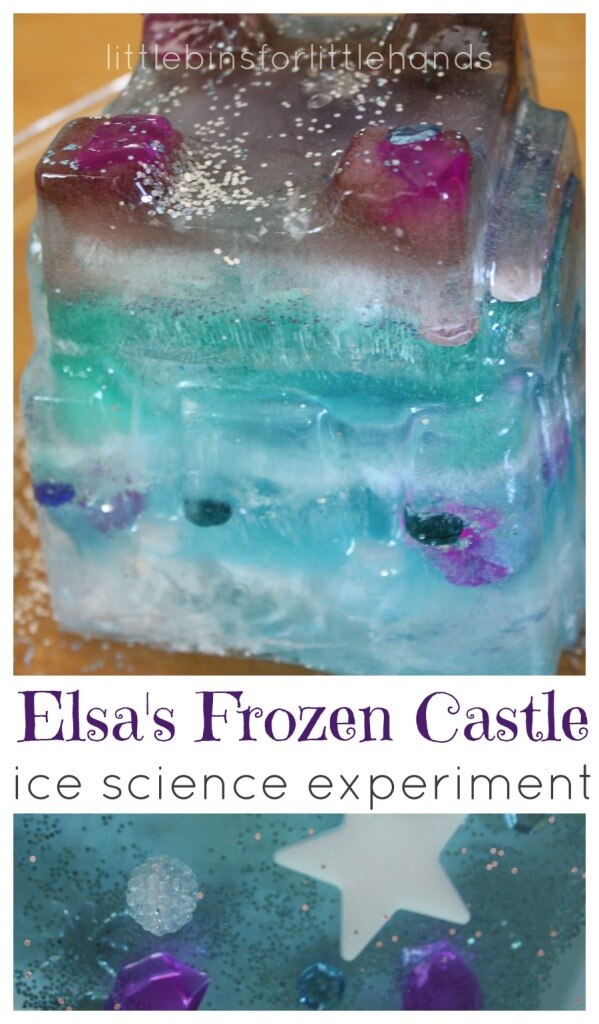
How to Setup a Frozen Ice Castle
- A Sandbox castle bucket or, in a pinch, a plastic food container will work, too!
- Food coloring
- Water
- Gems, jewels, sequins, glitter, snowflakes, and anything else that reminds you of Elsa!
I froze the water in three layers. Each layer is a different color. The first layer was purple. The second layer a blue/green mix and the third layer was blue.
In each layer, I put the different treasures. I have a huge jewel I found at the dollar store. Let each layer freeze completely.
TIP: You may want to start your frozen castle the night before. You could also make mini frozen castles with small buckets! To remove the frozen castle, run the sides under warm water. It should release easily.
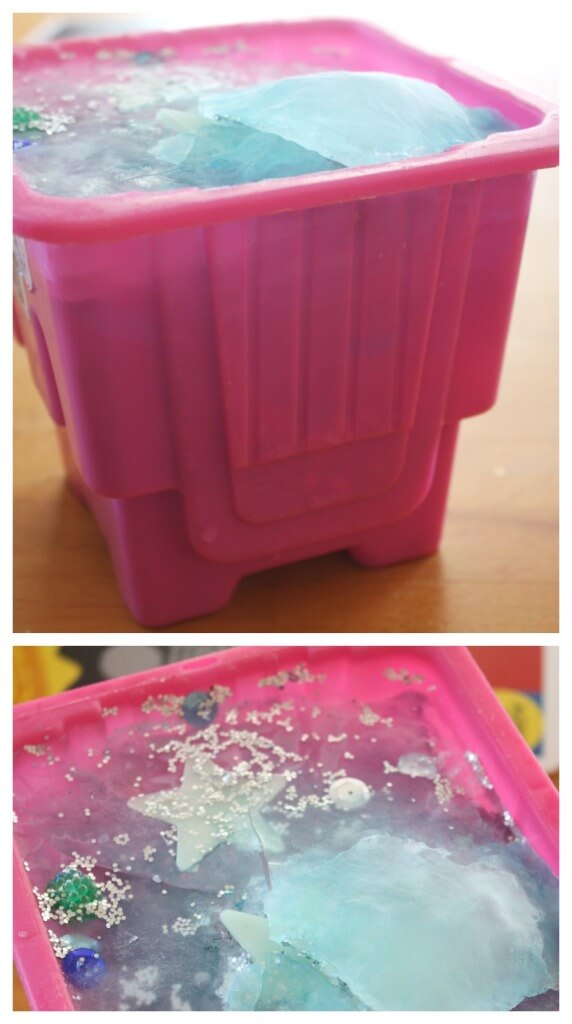
Now it’s time to melt Elsa’s frozen castle and find the treasures inside. We use eye droppers, squeeze bottles, and basters. Also, add a bowl of warm water. Feel free to get in on the action. I find it quite fun to play too!
Ice melt science experiments are great for fine motor skills!
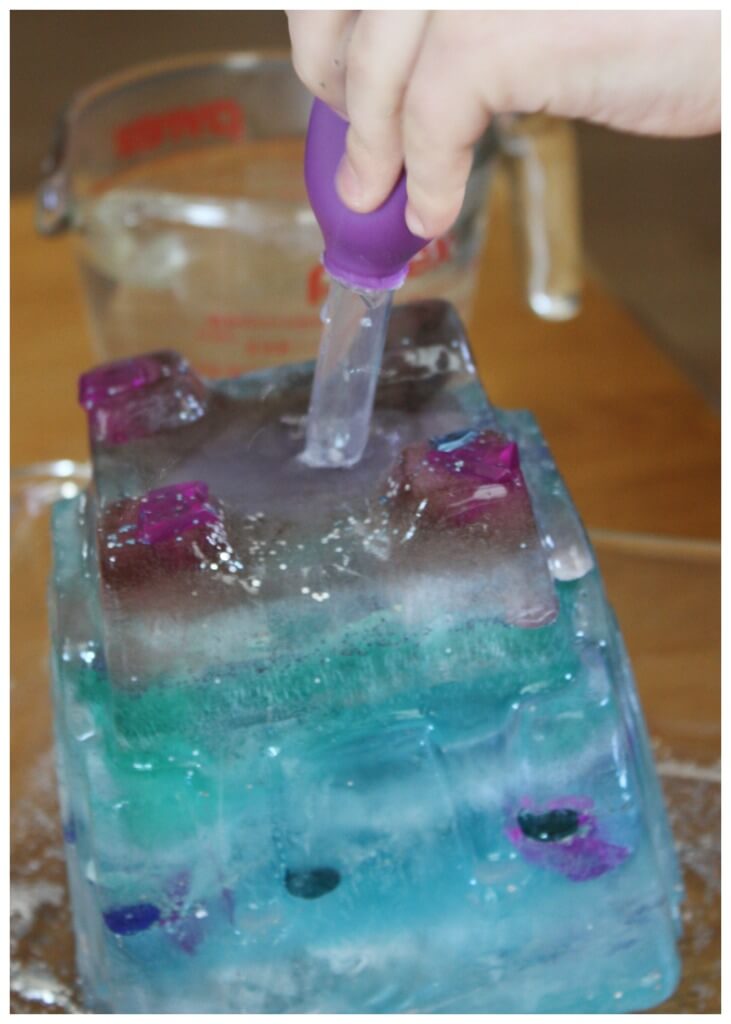
What’s left of Elsa’s frozen castle is a beautiful water sensory play opportunity! Add some scoops!
Simple Ice Melt Science
Use the opportunity to talk about what your child is seeing and doing! Talk about temperature and physical change and states of matter!
For preschoolers, explaining why warm water melts ice can be done in simple terms to help them understand basic concepts. Here’s a straightforward explanation:
- Use familiar terms: Start by using terms that preschoolers are familiar with. You can say, “Think of ice like a very cold and hard popsicle. When we add something warm, like warm water, it helps the ice change.”
- Talk about temperature: Use basic temperature concepts. Say, “Warm water has a higher temperature than ice. When the warm water touches the ice, it shares its warmth with the ice, making it melt.”
- Use comparisons: You can use comparisons they might understand. For example, “Just like you feel warmer when you stand in the sunshine, ice feels warmer when we add warm water to it.”
- Discuss changes: Highlight the change happening. Say, “See how the ice is changing? It’s becoming water because it’s getting warmer. The ice doesn’t stay hard when it feels the warmth.”
- Encourage touch and observation: Let them touch and feel both the ice and the water. Ask questions like, “Can you feel how the ice is hard, and the water is not? That’s because the ice melted into water.”
- Use simple language: Keep your language simple and age-appropriate. Avoid complex scientific terms that might be confusing for preschoolers.
Remember, the goal is to make the concept understandable and interesting for them. Encourage questions and exploration, and provide a hands-on experience whenever possible to enhance their understanding of the science behind melting ice with warm water.
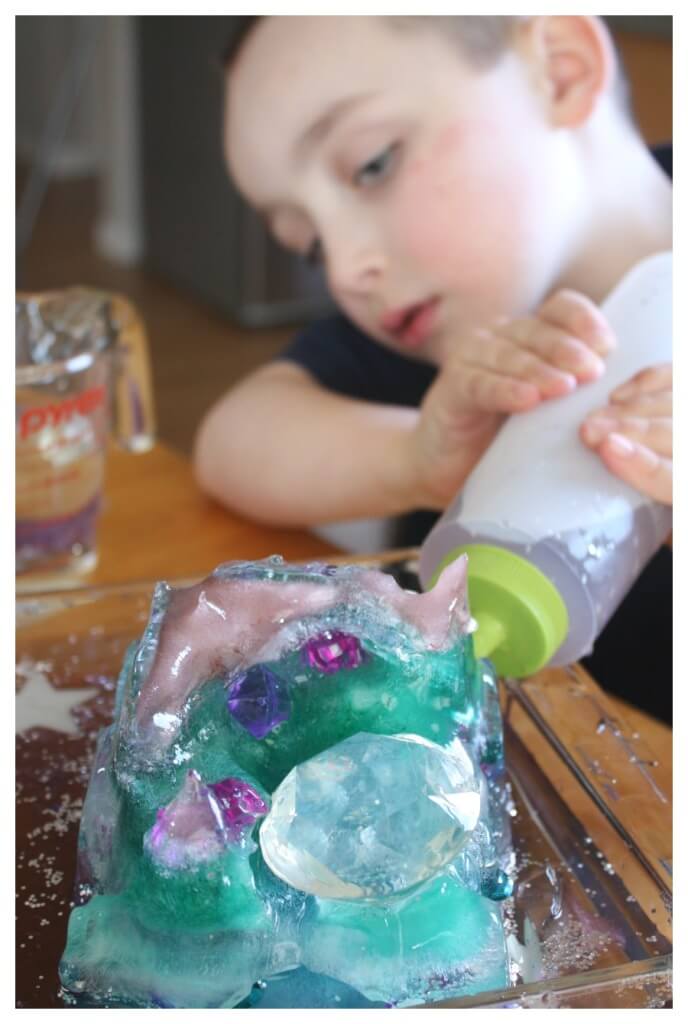
More Fun Ice Activities for Kids
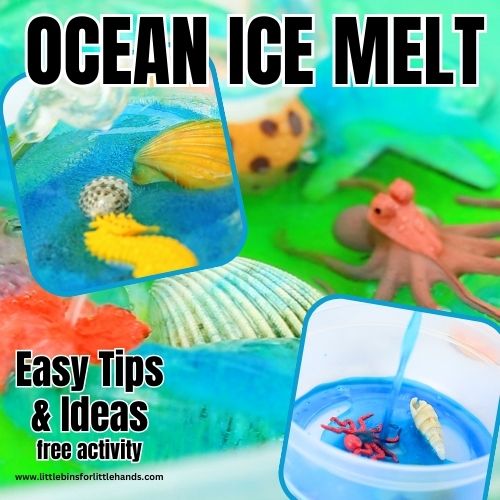
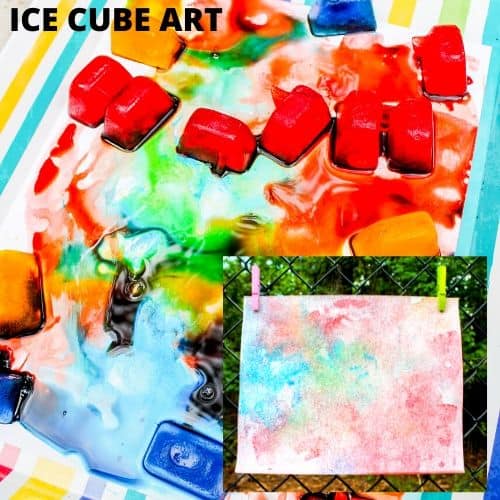

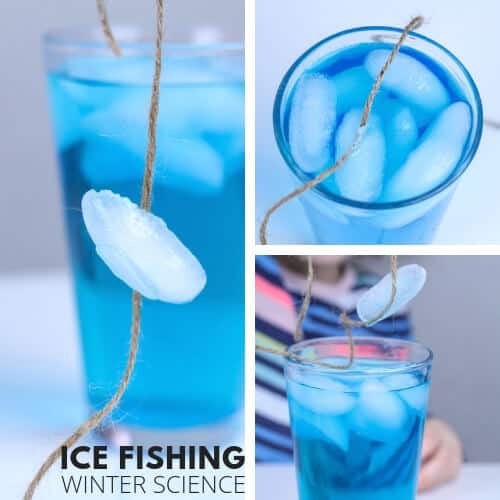
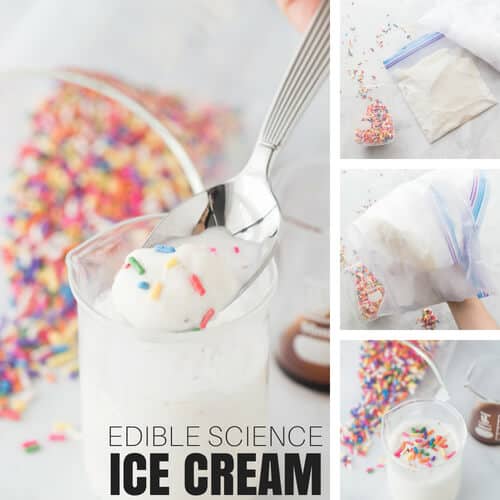

Perfect Preschool Activities
- Preschool STEM Activities
- Preschool Science Centers
- 5 Senses Activities
- All About Me Theme Center
- Sensory Bins for Kids
- Preschool Math Activities
- Fine Motor Activities for Preschool
Printable Preschool Pack
Get ready to explore this year with our growing Preschool STEM Bundle!
What’s Included:
There are 12+ preschool themes to get you started. This is an ” I can explore” series!
Each unit contains approximately 15 activities, with instructions and templates as needed. Hands-on activities are provided to keep it fun and exciting. This includes sensory bins, experiments, games, and more! Easy supplies keep it low cost and book suggestions add to the learning time.


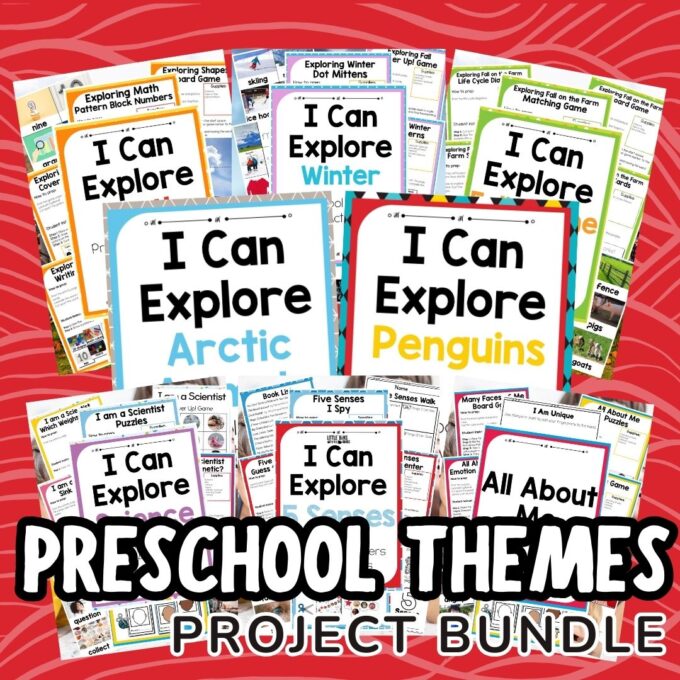






One Comment
Comments are closed.